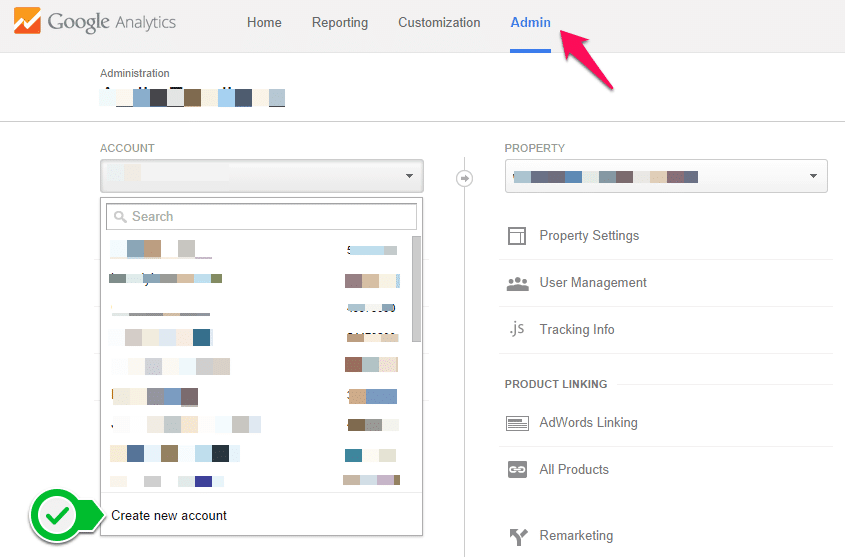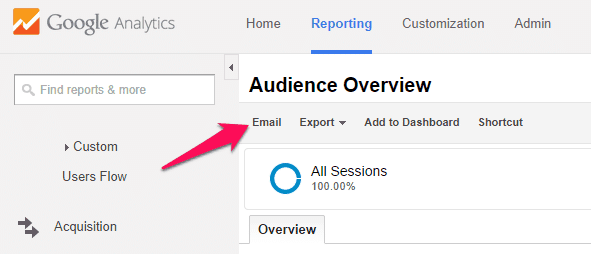ABC’s of Google Analytics for Your Website

If you have a website, there is no excuse why you shouldn’t be using Google Analytics to track your web traffic. Yes, there certainly are lots of other website traffic and analytics trackers out there. Google Analytics has risen to the top of the pack because it is free (and who doesn’t love free?) and it is awesomely powerful. Plus, it is extremely widely used and that means that developers have created plugins and other ways to easily implement & use your Google Analytics.
Even the smallest of web sites should be looking at their traffic. For one, you can see if nefarious no-gooders are coming to your site, or sending traffic to your site. That would be a sign of a potential problem. But even better, you can see if your frenzy of social posts are actually resulting in any visitors to your site and understand what content on your site your website visitors are viewing.
No excuses, here are the simple A B Cs to get started with Google Analytics
Google Analytics – A is for Account
- Log into http://google.com/analytics with your Google Account (you know you have one). Remember, your Google Account might not end in gmail.com.

- Create a new Analytics account (or add an additional property, a.k.a. website, to an existing account, details on the hierarchy of accounts & users)

- Fill out the necessary info – Account name (I usually just use the company name), Website Name, Website URL, Industry Category & Reporting Time Zone. This is important so that you look at the data reported in your time zone. Choose your sharing settings for giving access to this data to other Google services and click “Get Tracking ID”
- Copy this Tracking ID Number, you will need it. If you don’t have a WordPress site, you may need the entire code snippet.
- Add other users (optional) – This is an easy way to share ownership of Google Analytics for a website (add another administrator) or just ensure that other members of your organization or team can access the data
Google Analytics – B is for Best Setup
- Each page on your site needs to have the tracking code, but there are lots of ways to do this
- If you don’t have a WordPress site, look for where you can insert code into the Header of your site.
- For WordPress, you may be able to use whatcha got – your theme or SEO plugin may have a place for the tracking code. Paste it in & set other options if available.
- Specialized Plugins – do fancy things like show analytics info on the dashboard. Here are two plugins I have used for Google Analytics
Google Analytics – C is for Check
- After 24 hours, there will be data to look at
- Review analytics at least once a month
- Set up an email report & email it to yourself monthly as a reminder

- Here are some common metrics & what they mean
- Session – this is when one person comes to your website. They may look at several pages while they are there, but it is considered one session unless 1) the person is inactive on your site for over 30 minutes or 2) they come back to your site within 30 minutes, but from a different campaign
- User – this is one person coming to your site (technically, one device, but we’ll assume there is a person using it)
- Pageview – just like it sounds, when a page is viewed, it is a pageview
- Bounce Rate – this might be the most mis-understood metric. A “bounce” is when a user comes to your site, looks at one page and then leaves. Most websites are trying to engage users, so they want a low Bounce Rate, meaning that users are looking at more than one page per session. However, some websites, like Quora, might want users to only have to look at one page to get what they need. In that case, a high Bounce Rate is a good thing because users didn’t have to search around for what they needed.
- Acquisition – this is how a user got to your site. Direct means they typed in your website.
Finally, you can set up goals based on what you want from your website. This way Google Analytics can use your data to tell you if your website has been successful in achieving the results you want. Google offers lots of help tutorials and videos on using Google Analytics, so if you’re ready to learn more, go check them out.

